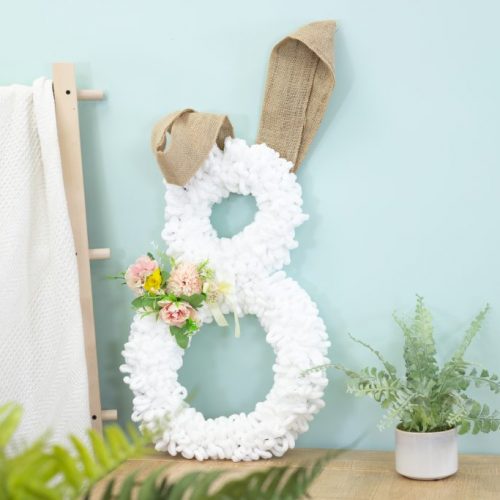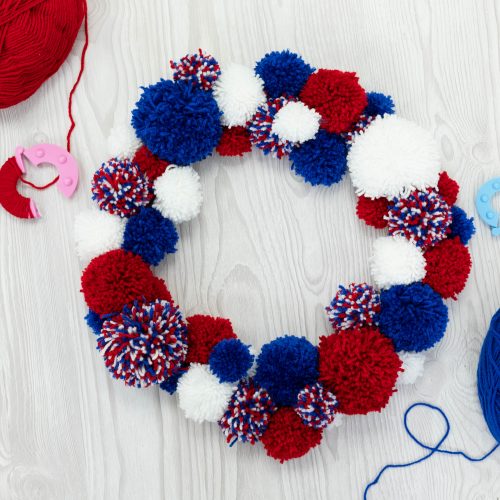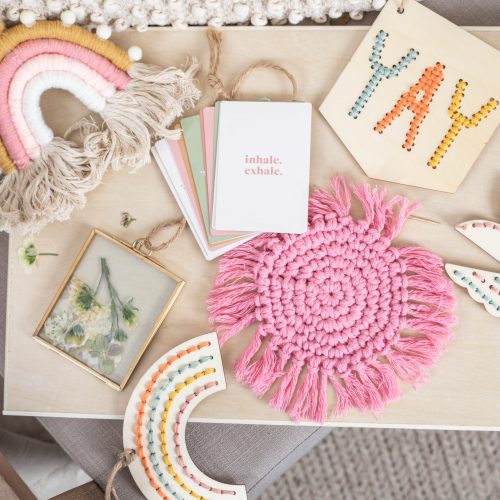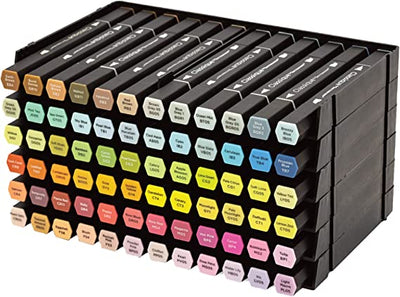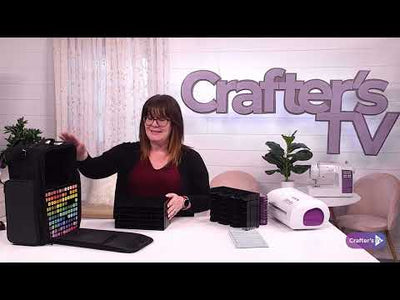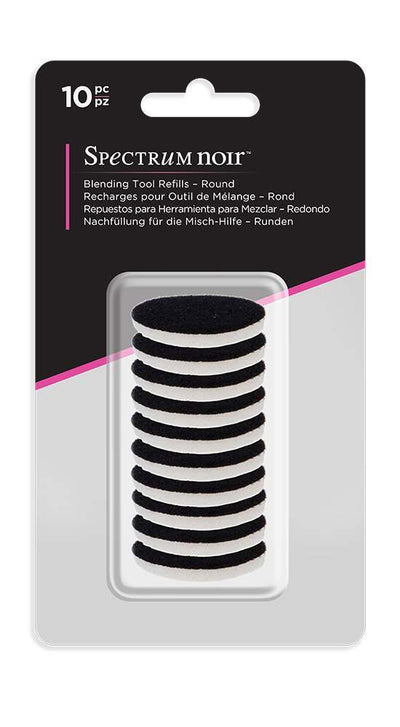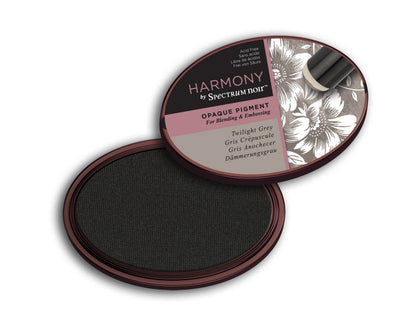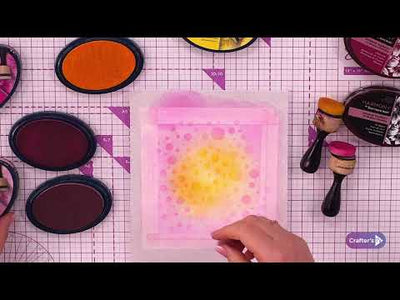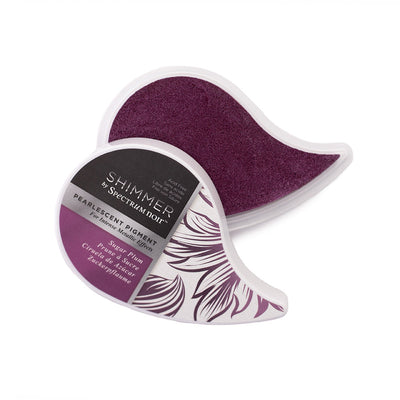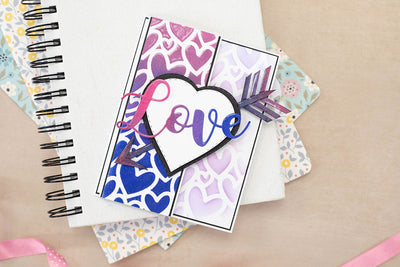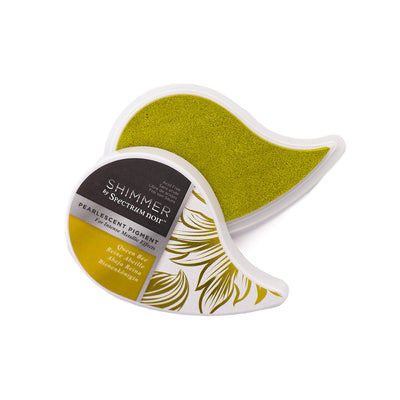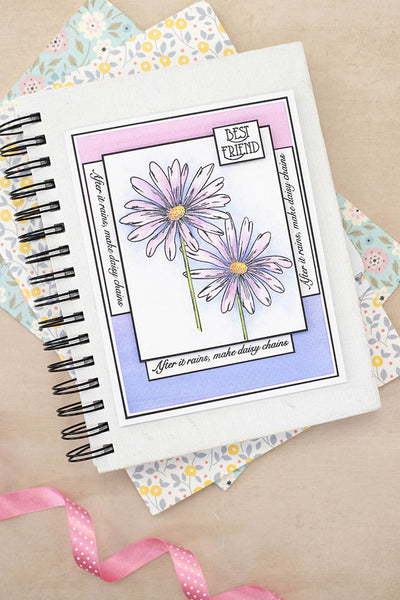The beginner's guide to quilting
- Read time: 9 minutes
- Written by: Crafter's Companion
Quilting is a craft discipline that has stood the test of time. From Colonial quilts in the 17th century to quilting for the military in the Civil War, and from Crazy Quilts in the Victorian era to the Make and Mend movement during World War II, this is a craft that has developed throughout history and still proves to be popular in the modern day.
We know the feeling all too well when you look at a beautiful quilt that someone has made and think ‘I wish I could do that,’ so we’ve put together this handy guide with all the basic information that you need to know. From a definition of quilting to handy tools to a helpful glossary, this is the post you need to read if you’re brand new to the craft!

What is quilting?
By definition, quilting is the process of sewing two or more layers of fabric and batting together to make a padded material. It’s usually done when you want to create a quilted garment, such as a coat, or homewares, like a quilt or table runner. Typically, quilting is done with three layers – the quilt top (the pretty top fabric), batting or insulating material and backing material, but there are so many variations to experiment with.
One question we often hear is ‘what is the difference between quilting and patchwork?’ As mentioned above, quilting is all about sewing layers together to form a padded project, where as patchwork is the process of sewing pieces of fabric together to form a block or pattern. These can then be stitched together to form a quilt top, which would go on to be used in your quilting project.

Essential tools for a beginner’s kit
- Fabrics – building up your fabric stash is a huge part of the fun! But make sure that you choose the best quality fabrics possible, so that your quilting projects can be as professional as possible.
- A sewing machine – while it is possible to create a quilt by hand, we recommend picking up an entry level machine that will help you to create quilts much more accurately and quickly.
- Threads – try to use the same fibre content as your fabric, so pair cotton fabrics to cotton threads, poly with poly and so on, but don’t get too hung up about it! As with your fabric, choose the best quality that you can.
- Scissors – this might seem like an obvious one, but by investing in a good pair of scissors, you’ll really notice the difference in your quilting projects. Always use dressmaking shears for fabric, but don’t use them for anything else, otherwise they’ll become blunt. Use small embroidery scissors or snips for cutting curves or trimming threads. Pinking shears stop woven material from fraying and help to add a decorative edge.
- Fabric clips – while pins are good, fabric clips are much better suited to beginners. They can hold multiple layers of fabric together at once and can be sewn over very easily!
- A rotary cutter – while scissors are great for smaller pieces of fabric, you should use a rotary cutter to slice your way through larger fabrics.
- A cutting mat – a good quality cutting mat is absolutely essential if you’re using a rotary cutter. It will help you to protect your work surface from becoming damaged and provide you with measuring lines for accuracy.

Advanced tools
- Build-a-Block Patchwork System – this is a set of dies that has been designed to help you create all the elements you could need for your patchwork blocks. All you need to do is sandwich your dies and your fabric between your cutting plates, and roll them through a die-cutting machine for precise shapes.
- Build-a-Block Curves – this is the sister set of dies to the original Build-a-Block and it has been designed to help you cut our accurate curve shapes for your patchwork projects. Curves are notoriously difficult to cut, so this system is ideal for beginners.
- Threaders Shape Creator – the Shape Creator has been designed to be used alongside a rotary cutter and a cutting mat. Simply lay your cutting mat down, then add your fabric and position the Shape Creator on top, before using a rotary cutter to cut out your shapes. A standard sized rotary cutter will fit perfectly into the cutting slots, which will help guide the cutter to result in accurate shapes every time.
- Quilting Pattern Guides – these versatile guides are ideal for both beginners and experts, and offer you the chance to create incredibly detailed designs to take your quilting to the next level. These guides are created from 3mm thick acrylic and allow all quilters to expand their creativity by stitching stunning designs following along with the shapes.

5 tips for quilting beginners
- Always pre-wash your fabric, unless the fabric care instructions say otherwise – washing helps to remove any chemicals from your fabric and prevent colour bleeding that could occur later down the line. It also helps to prevent further shrinking. If you’re ever in doubt about whether you should wash a material or not, check the care instructions first.
- Start simply – don’t run before you can walk! Choose an easy pattern to get started – perhaps one that allows you to use a few beginner techniques, then work your way up to those impressive quilts.
- Always use a consistent seam allowance – to make sure that all of your quilted blocks are the same size, a consistent seam allowance is a must. A 1/4″ seam allowance is the usual recommendation and by following that rule, your blocks should be perfect.
- Measure twice, cut once – don’t waste any of your precious fabric. Make sure you measure and measure again, then cut once you’re confident.
- Choose fabric colours wisely – there’s nothing worse than picking out that perfect pattern to drown it out with colours and prints that don’t work. Make sure you pick complementing fabrics and tones that work together, but also work with your pattern.

Beginner’s quilting glossary
While there are lots of different quilting terms out there, these are 12 words or phrases that we think are absolutely essential to know if you’re new to the craft.
Applique – a technique where fabric shapes are cut and sewn on to a fabric block or quilt top. Usually, a fusible material is ironed to the back of the shape and ironed on top of the fabric block.
Backing – the backing on a quilt is the third layer and can be a piece of extra wide backing fabric or another fabric of your choice.
Binding – the finishing of the quilt. Long, thin fabric strips that are attached to the borders of a quilt.
Corner Square – a square that is sewn to the ends of the top and bottom border before added to the quilt.
Corner Triangle – the four triangles set in the corners of a quilt that is set on “point”.
Free Motion Quilting – a process requiring a quilting, darning or hopper foot. These feet help you to move the fabric freely in all directions to create a ‘handdrawn’ design.
Half Square Triangles – a triangle that is created when you cut a square from one corner to opposite corner.
Interfacing – a variety of materials that are used on the wrong side of fabric to give it more stability.
Pressing – an iron is used to press a seam open directly after setting seam.
Right Side – the “front” side of the fabric, usually distinctly printed side of the fabric.
Seam Allowance – the fabric on the right of the sewing line from the raw edge. This process keeps the edge from fraying and it maintains a secure seam.
Tension – the amount of “pinching” done to your thread as it flows through the sewing machine. Thicker fabrics need a higher tension or a firmer pinch, and thinner fabrics need less tension or a lesser pinch.

We hope that this beginner’s quilting bonanza has given you some of the advice and encouragement needed to help you get started! But we’d also love to hear from some of our existing quilting fans too, so give us your best piece of quilting advice on our Sew Inspiring with Crafter’s Companion Facebook page, tag us on Instagram (#crafterscompanionsews), on Pinterest (@CraftersCompUK) or on Twitter (@CraftersCompUK)!
